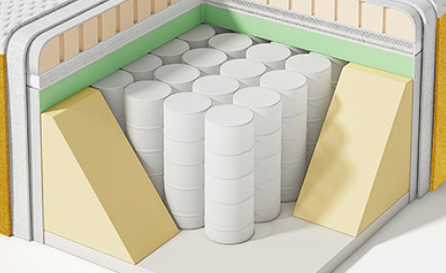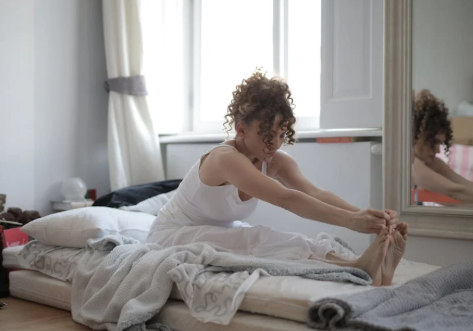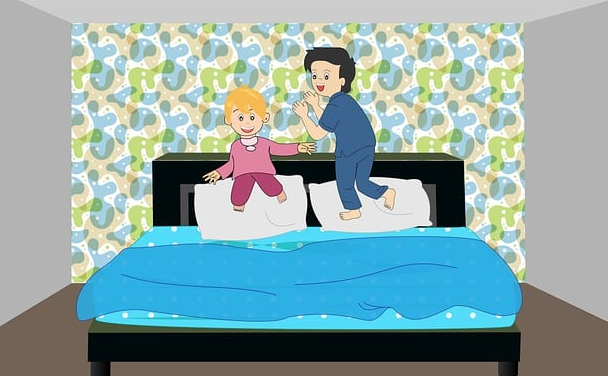Currency


What Is Mattress Edge Support? Why Is It Important?
Ⅰ. Introduction
When choosing a mattress, we usually focus on softness, hardness, material, breathability, and even brand reputation first, but often overlook a very practical indicator - mattress edge.
This word may sound a bit unfamiliar at first, but it actually refers to the edge support force around the mattress, which is commonly known as "bed edge support". It determines whether there will be significant sinking when we sit by the bed; When we sleep close to the bed, can we still be steady and not feel like we're about to fall off.
I never thought about this indicator before, until I saw many people discussing it on foreign websites and realized the importance of mattress edges. In user reviews both domestically and internationally, the feeling of sitting by the bed has almost become the standard for judging the quality of bed edge support. Think about it, we actually do this action every day - getting up, putting on shoes, sitting for a while at night, even chatting with friends - all of which cannot be separated from the bedside position.
So the question is: Is mattress edge support really important? Our answer is - very important, and for some people, it can even be a key factor in determining the quality of their sleep experience.

Ⅱ. The Importance of Edge Support: Who Needs It the Most?
1. Couples or partners sharing the same bed
If two people sleep on the same bed, then the space is limited. For mattresses without edge support, the edges will sink down. We also didn't sleep well. If there are edges around, the entire mattress's usable area will also be fully utilized.
2. Elderly or mobility impaired individuals
For elderly people, sitting by the bed, tidying up clothes, putting on shoes, and even getting up with the help of the bed edge is one of their daily actions. The edge of the bed is too soft and lacks support, which can result in poor body balance and easy falls. We have encountered many people who say that their mattresses lack support and easily slide down from all sides. Later, they specifically switched to mattresses with edge support, which felt much better.
3. People who enjoy activities by the bed
Some people like to read books, play with their phones, and even work by their bedside. At this point, if the edge of the bed is as soft as cotton, it will cause uneven stress on the waist and thighs, making sitting for a long time very uncomfortable. People with stable mattress edges can use the bedside as a small sofa.
4. Users with higher body weight
The load-bearing capacity of a mattress is closely related to its edge stability. People with higher body weight can easily feel significant sinking and even lose balance if they sleep on the edge of a mattress with weak support. A strongly supported bed edge can effectively disperse pressure, preventing the edge from collapsing quickly.

Ⅲ. Edge Support Performance of Different Mattress Types
The edge support of a mattress is not only related to design, but also inseparable from the material and structure of the mattress. When choosing, we can refer to the matte edge performance of different types of mattresses:
1. Traditional spring mattress (Innerspring)
Spring mattresses usually have thickened spring coils or hard frames added around the edges to enhance edge stability. We have experienced several high-end spring mattresses, which have almost no obvious sinking when sitting on the edge of the bed, making them very suitable for people who need to use the bed frequently.
2. Hybrid mattress
Hybrid mattresses combine the advantages of springs and foam. Most brands add a ring of high-density foam or reinforced springs to provide increased edge support. The advantage of this type of mattress is that it provides stable edge support without sacrificing a soft sleeping experience.
3. Memory Foam Mattress
The comfort of memory foam is impeccable, but the edge support is usually short. If there is no high-density foam edging, long-term use may result in significant sinking. However, some new memory foam mattresses have started to incorporate special reinforcement designs at the edges to improve this issue.
4. Latex mattress
Natural latex has good resilience and support, and even without additional reinforcement, the matte edge performance is not bad. However, it should be noted that the weight of pure latex mattresses is relatively large, and care should be taken to avoid damaging the edges when moving them.
Ⅳ. How to Test the Edge Support of a Mattress?
When we try out beds in the store, why not focus on experiencing the performance of the bed edge. A few simple methods:
Sitting at the corner or edge of the bed: feel if there is a noticeable sinking sensation, and whether the body can maintain balance after sitting down.
Lying at the edge of the bed: Simulate the actual sleeping position and see if there is a tendency to slide outward.
Stand up and press the bedside: Apply pressure with our palm or knee, observe the rebound speed and stability.
Double person test: If sharing a bed with a partner, have one person sit by the bed and the other person feel the changes in the middle area.
Although these methods are simple, they are more effective in judging the edge quality of a mattress than simply relying on advertising.

Ⅴ. How to Improve the Edge Support of Existing Mattresses?
If we have already bought a mattress but find that the edge support is insufficient, we don't necessarily have to replace the mattress. We can try these methods first:
Replace the bed frame with a more stable one
A loose bed frame can also affect the support of the mattress. We can use reinforced wooden and metal bed frames to improve the edge support of the mattress and enhance stability.
Add edge support foam to the mattress
Some brands sell specialized reinforced foam strips that can be placed around the mattress to enhance the load-bearing capacity of the edges.
Regularly rotate the mattress
If it is a reversible mattress, it can be rotated every 3-6 months to distribute the force more evenly and delay edge collapse.
Reduce edge overload
Try to avoid sitting by the bed for a long time, especially when repeatedly subjected to stress in the same position, as it can accelerate the deformation of the bed edge.

Ⅵ. Conclusion
In our opinion, the support of the mattress edge is definitely not an indicator that can be ignored. It not only affects the available area of the bed, but also relates to the comfort and safety of daily use. For couples who share the same bed, elderly people, those with limited mobility, and those with high body weight, a strong support bed edge is even a necessity.
Next time we choose a mattress, why not take a few minutes to sit by the bed, lie down to the edge, and feel it well. A stable mattress edge may allow us to use the mattress for several more years and make our sleeping space more secure and comfortable.
Error de formato de correo electrónico
emailCannotEmpty
emailDoesExist
pwdLetterLimtTip
inconsistentPwd
pwdLetterLimtTip
inconsistentPwd